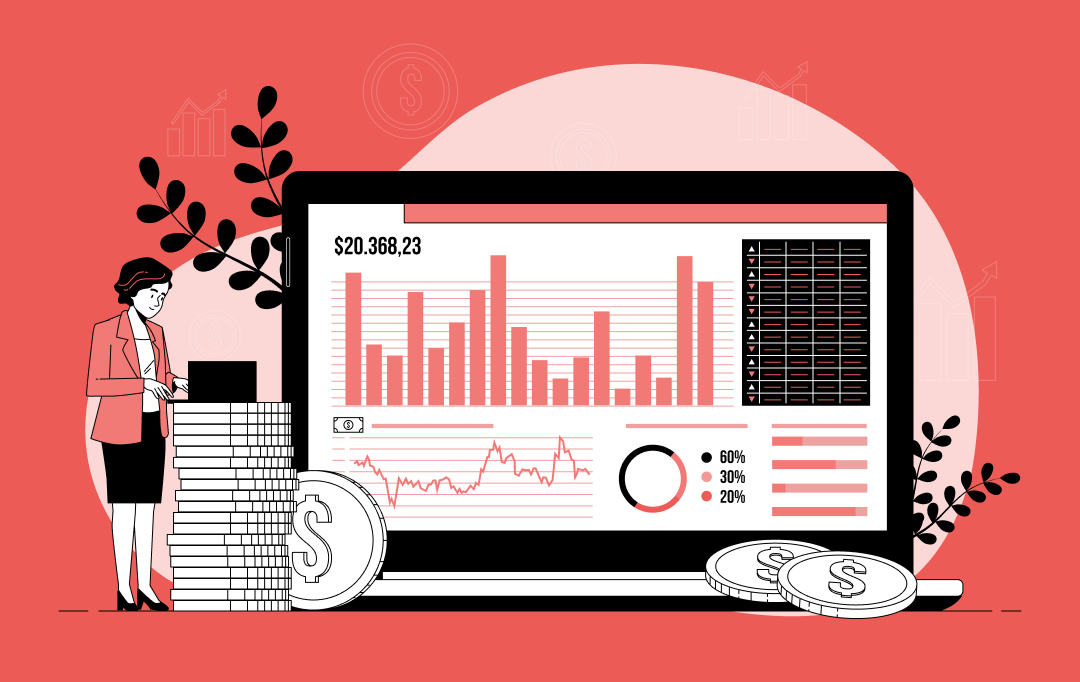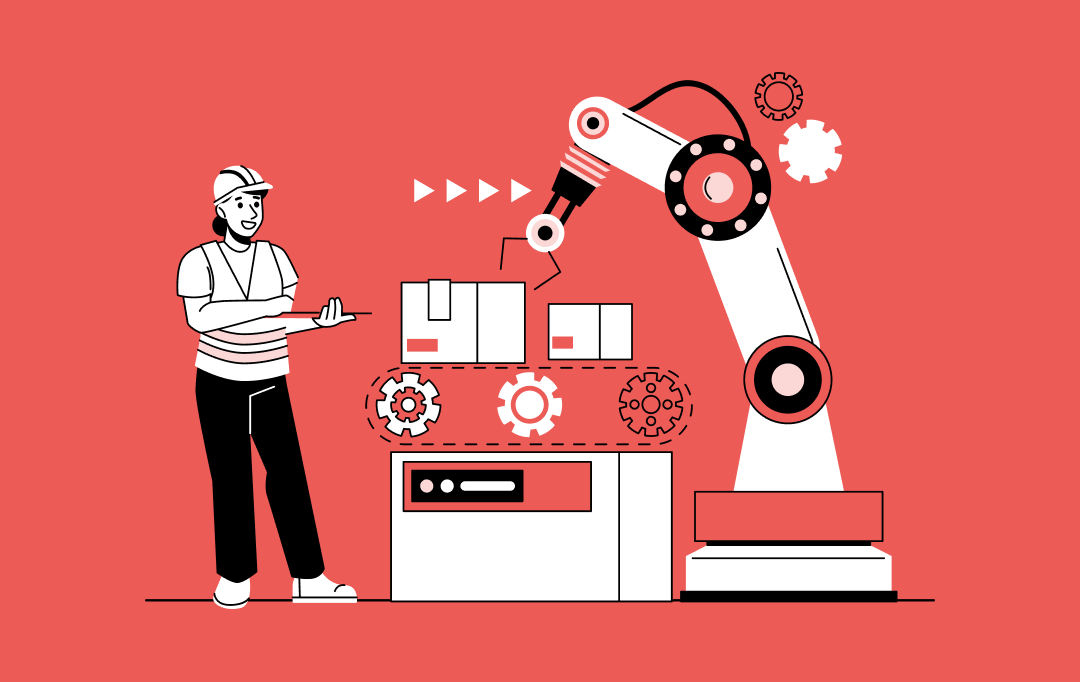- What is big data in retail?
- The current state of inventory management analytics and the role of data analytics
- What are the benefits of data analytics for inventory optimization?
- Prediction of needs
- Replenishment optimization
- Prevent stockouts
- Speed up order fulfillment
- Fast recalls
- Increased customer satisfaction
- Reduced costs
- How does Appinventiv combine data analytics with inventory management?
A report by Research and Markets states that the retail analytics market worldwide is expected to grow at 18% between 2019 and 2025. This means that soon the market will be valued at $9.5 billion.
The number while uber impressive begs the question “How”? How a technology that was not even present five decades ago bringing such a massive impact in an industry that has been around since 10,000 years. A simple answer to this can be the fact that it fits. Data analytics – as a capability – has been everything it takes to change the face of inventory optimization and retail as a whole.

What is big data in retail?
Big data and analytics for retail is the application of data-driven tools used for articulating business patterns and performance. On a higher level, big data or data science in retail is the mobilization of business analytics processes in the retail economy.
Retailers make use of business intelligence and big data analytics to gain key insights that can be used for decision making and improving inventory management, operational efficiency, sales, and overall customer experience.
This information that big data in retail generates enables retailers to:
- Find the target personas
- Create customer behavior and buying patterns
- Compare the customer preferences
- Identify location-based and seasonal trends
While this was about the role of big data in retail, let us refine our focus on inventory management.
The current state of inventory management analytics and the role of data analytics

Projected to reach USD 3.82 Billion by 2028, the inventory management solution market is a fast expanding one. Powered by intense demand for competitive-level efficiency, the present-day inventory management capabilities go beyond accurate inventory and automation of business processes. Smart data discovery, data mining and analytics have the key to providing business insights that help with making data-backed decisions needed for better profitability and productivity.
Efficient inventory optimization solutions can analyze a vast portion of past sales and anticipate the inventory future demand by adding in seasonality and lead times. Moreover, in the age of big data, inventory optimization techniques can give you insights into customer preferences, product performance, and the channel performance.
The inclusion of big data in inventory optimization solutions can help answer questions like:
- What is the amount of inventory needed to meet the demand while keeping the stock levels down?
- How can stock management be optimized?
- How can product recalls be reduced?
- How can cross-selling be enabled for improving the performance of slow-moving stocks?
While it is important to know the use cases of data analytics in inventory management, it is equally crucial to answer the how.
How does data analytic software smoothen the inventory management process? Through the use of its 4 models.
1. Descriptive analytics: It gives retailers the summary of the inventory performance – movement of items, speed of replenishment, etc.
2. Diagnostic analytics: It answers the why. Why did the items stocked out? Why did the customer leave a bad review? Etc.
3. Predictive analytics: It helps anticipate trends and shopper behavior on the basis of the inventory management history.
4. Prescriptive analytics: It helps retailers make gradual adjustments in the anticipation of change in consumer emotion, supply shocks, demand, etc.
Now that we have looked into the high level benefits of big data and analytics for retail and inventory optimization, let us dive into the details.
What are the benefits of data analytics for inventory optimization?
Identifying ways to better inventory management is a key role for any retailer. The adoption of big data and analytics for retail makes it easier. Here are the many ways data analytics help to improve inventory management.

Prediction of needs
One of the key elements of big data in the retail space is its predictive analytics for inventory optimization feature. Predicting the changes in how customers behave can go a long way in making inventory management efficient.
Throughout the year, at different points, customers show completely different buying habits. When a retail house fails to find a pattern in those changing trends, they are left with an inventory they don’t need with no space left for what they customers truly want. With data analytics, they get insights into what to stock their inventory with at what time of the year. This doesn’t just help with the incorrect stocking issue but also saves them from the last minute hustle of procuring items for their clients.
[Also Read: How to leverage predictive analytics for growing business]
Replenishment optimization
Having a lot of slow-moving items or unavailability of an in-trend item can harm both customer satisfaction and profits.
For a long time, employees have had to check the inventory manually and then estimate how much of an item should be reordered – based entirely on guess work. Now when you add data analytics in the mix, you are able to analyze key business elements such as sales trends, speed at which an in-trend product gets out of stock, speed at which a slow-moving item sells off, etc.
With all this information at your disposal, it becomes easy to take the best replenishment optimization decision by keeping slow-moving items off the most frequented shelf locations and replacing them with items that are actually needed. What’s best is that there are several inventory optimization tools in the market today that notifies the retailers of when a product is about to get replenished.
[Also Read: A smart decision-making with the inventory management app for your business]
Prevent stockouts
An extension of replenishment optimization is prevention of stockouts. It is a big challenge for retailers as the shopper would quickly turn to other retail houses if they are not able to find the product they need.
Data analytics for inventory optimization here can help with calculating the lead times – the number of days it takes for an item to reach your warehouse after you place an order. This lead time can then be merged with the current sales data to estimate the safety stock and inform retailers of when they need to place a reorder request.
Speed up order fulfillment
The retail business data holds the power to better the order fulfillment speed. While it is common for orders to get assigned to the closest warehouse to reduce the shipping cost and speed up delivery, data analytics for inventory optimization can do a lot more.
With the right set of big data technology, you can create a system where you can dictate where the item should be stored in the warehouse on the basis of its delivery timeline. Moreover, it can also tell the staff of the exact location of the item to lower the time it takes the staff to collect and pack the goods.
Fast recalls
Although unfortunate, recalls of items are not isolated events. They happen very frequently. While these events are not just costly, they even tend to tarnish a brand’s image if not handled promptly.
Now, a big part of item recall is tracking the selling details. Big data can help with this by tracing the product by number and their shipment details at every stage of the supply chain. What big retailers like Amazon do is that they use big data for monitoring web pages, right from social media to review websites to find people whom the defective items were sold to and then rectify it in-time.
Increased customer satisfaction
Data analytics-powered inventory management solutions play a massive role in bettering the buying experience by keeping track of the product return reasons and keeping the logistics side of the retail journey streamlined.
Let us look at some ways how customer satisfaction can be achieved with better inventory management.
- Switching to a reliable carrier service if the customers are citing shipping experience as the reason for not ordering again or returning the items.
- Customer receiving the wrong item is another prevalent challenge in a retail business. Something that can be solved through a simple barcode scan. For example, suppose a warehouse employee accidentally picks a wrong item, a barcode scanner can notify them, enabling them to correct the issue before the item is shipped.
- With data of what customers are purchasing/viewing when they buy a product, at your disposal, it becomes extremely easy to push them towards add-on, supplementary products. This doesn’t just help customers make smarter buying decisions but also improves the retail house bottom line.
Reduced costs
There are very few retailers who understand the cost impact of inventory management. A majority of them tend to ignore the financial impact of carrying excessive or incorrect items. While it is important to stock what is in demand, it is equally important to find a balance so that you don’t waste the warehouse space in an unplanned manner.
But how do you ensure this? By knowing the inventory cost.
An inventory cost is made of expenses like:
- Logistics and warehouse cost
- Material handling cost
- Storage cost
- Capital cost
- Insurance cost
- Risk-holding cost
Understanding the inventory cost and managing it is important to best manage the inventory space. And the way to do that is to gather insights from real-time inventory data so that you are able to forecast the demand and find the safety stock levels.
[Also Read: What is the role of big data in manufacturing?]
Now that we have looked into the key benefits of merging your inventory management with data analytics, the question that arises is how. The complex answer – invest in tools working around specific inventory management issues. The sensible answer – invest in a data analytics services company like Appinventiv and let them handle the process for your retail house.
How does Appinventiv combine data analytics with inventory management?
At Appinventiv our team of data analysts and engineers specialize in building retail-specific solutions which helps businesses in managing their inventory. While our specialty lies in creating customized solutions, here are the feature-sets that we usually add in all the data analytics solutions:
- Sync between inventory data and warehouse, sales channel, POS system, and 3PLs
- Automation for inventory stock tracking and reporting
- Algorithms to convert inventory data into reports that inform when you are overselling or when you are about to run out of an item
- Tracker for outstanding orders, arrival dates, and billing information, etc.
These are just a peek into the feature set that a typical Appinventiv built inventory management solution has. Are you too looking for a future-forward inventory optimization solution? Let us help you.



Unleashing the Role of Data Analytics in Driving Smarter Banking Decisions
The use of data analytics in banking is transforming how this data is interpreted and applied. Banks are using this data to make decisions that matter—fraud checks, loan approvals, or marketing campaigns. The focus has shifted: from storing data to using it smartly, and from pushing products to understanding people—being customer-centric. This shift is also…

10 Use Cases and Examples of How Pharmacy Data Analytics is Transforming Operations and CX
Data has become the currency of modern business, and the pharmacy sector is no exception. From inventory optimization to regulatory compliance, pharmacies today face many challenges that demand precision and agility. Well, pharma data analytics is solving all these conundrums as the main lead, a transformative approach that now empowers businesses to get actionable insights…

10 Use Cases and Benefits of Predictive Analytics in Manufacturing
Are you trying to stay in today’s manufacturing game with that old-school data analytics approach? Not gonna happen, buddy! Think about that old-school grind: manufacturing plant techies had to hustle around, scribbling notes and logging maintenance records by hand. All that manual intervention and hassle led to nothing more than messy data and bad calls.…

















